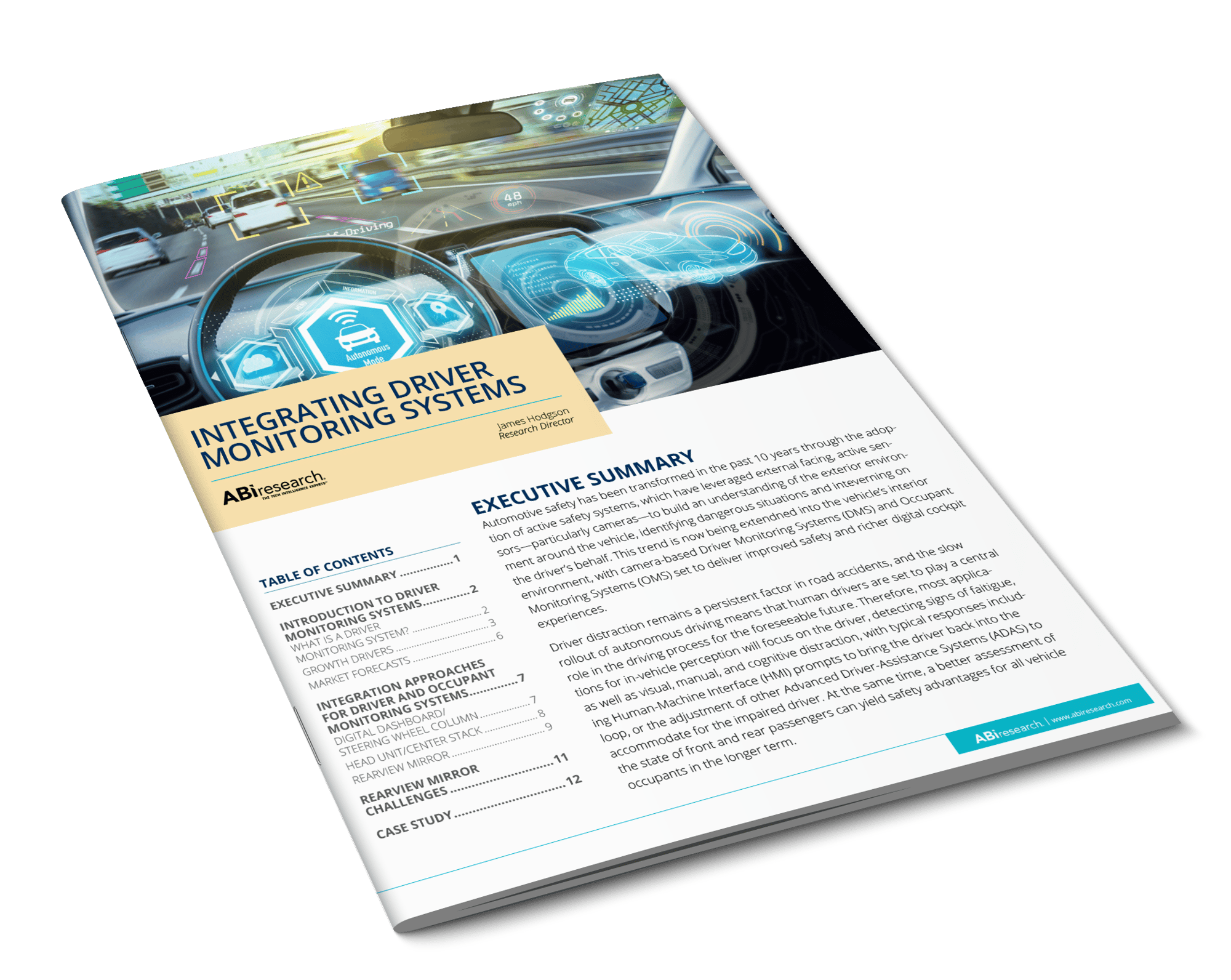Automotive safety has been transformed in the past 10 years through the adoption of active safety systems, which have leveraged external facing, active sensors— particularly cameras—to build an understanding of the exterior environment around the vehicle, identifying dangerous situations and intervening on the driver’s behalf. This trend is now being extended into the vehicle’s interior environment, with camera-based Driver Monitoring Systems (DMS) and Occupant Monitoring Systems (OMS) set to deliver improved safety and richer digital cockpit experiences.
Driver distraction remains a persistent factor in road accidents and the slow rollout of autonomous driving means that human drivers are set to play a central role in the driving process for the foreseeable future. Therefore, most applications for in-vehicle perception will focus on the driver, detecting signs of fatigue, as well as visual, manual, and cognitive distraction, with typical responses including Human-Machine Interface (HMI) prompts to bring the driver back into the loop, or the adjustment of other Advanced Driver-Assistance Systems (ADAS) to accommodate for the impaired driver. At the same time, a better assessment of the state of front and rear passengers can yield safety advantages for all vehicle
occupants in the longer term.
As the adoption of DMS and OMS is set to grow rapidly, driven by regulation and the activities of safety ratings agencies, Original Equipment Manufacturers (OEMs) are already pursuing value-added applications delivered over the enabling hardware of the DMS.
Download this whitepaper to learn more.

